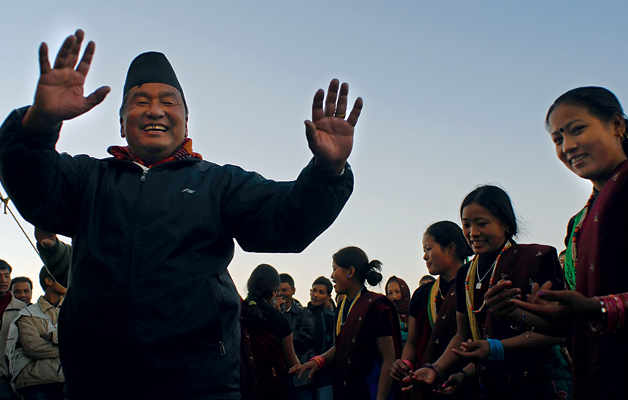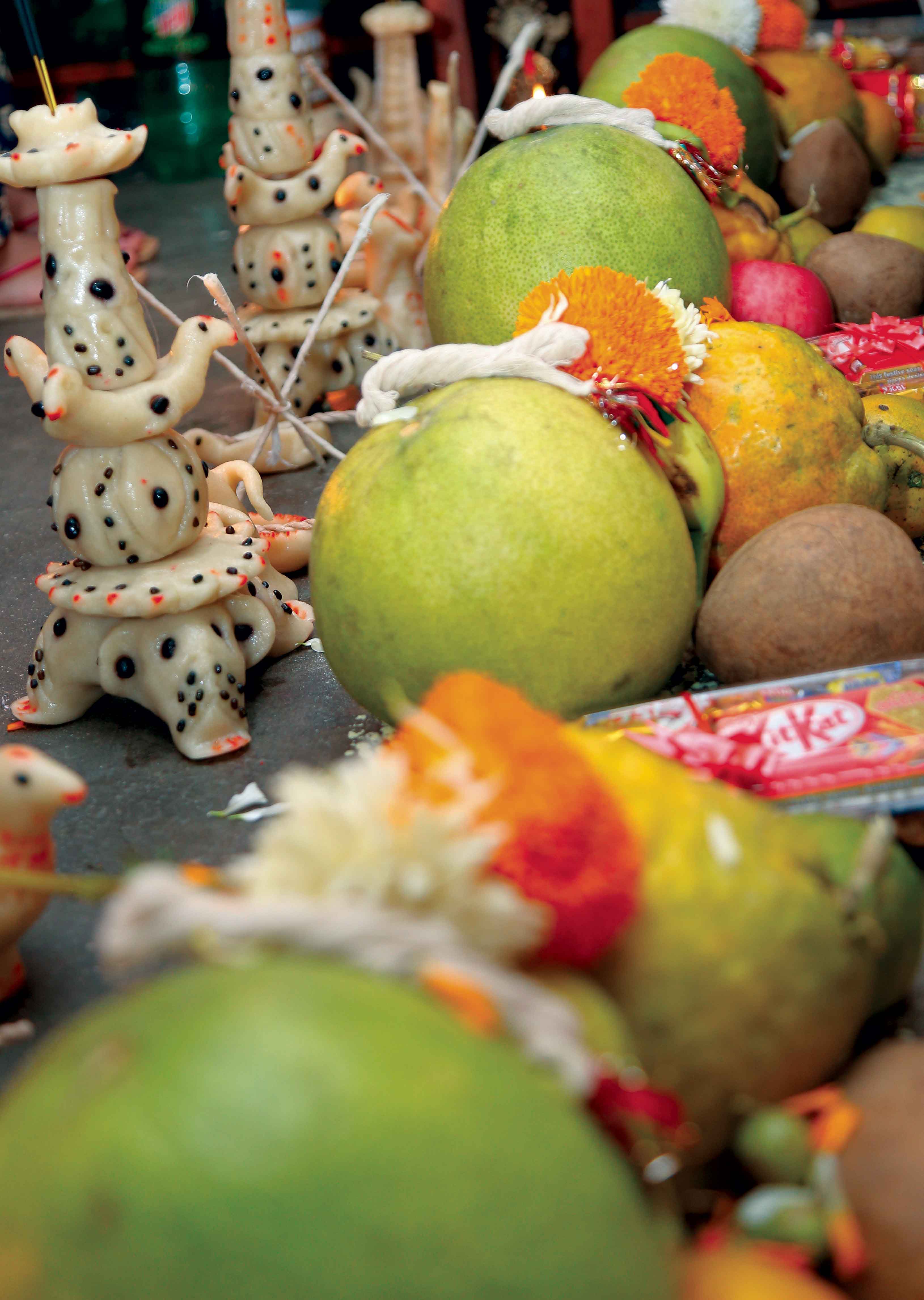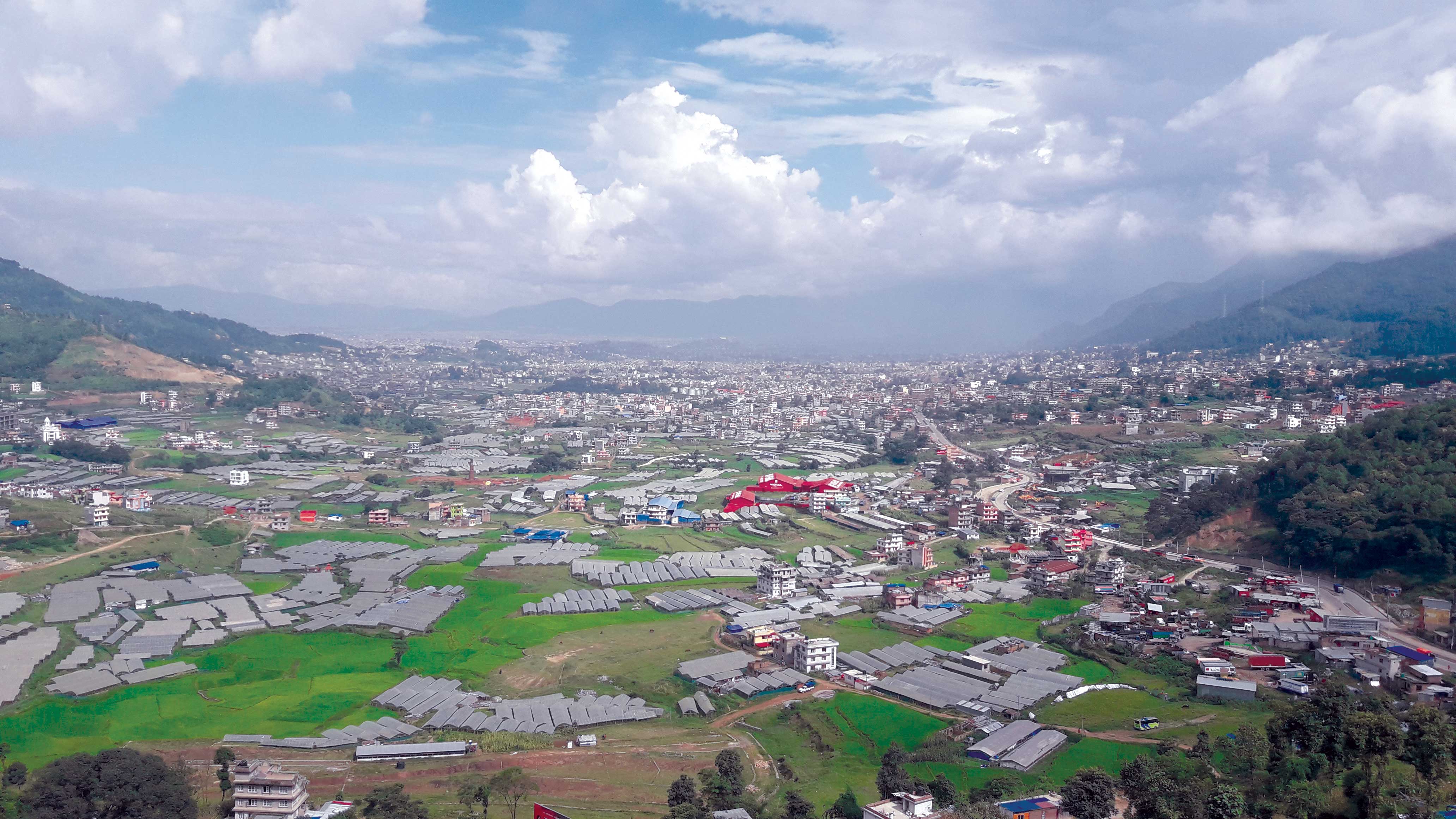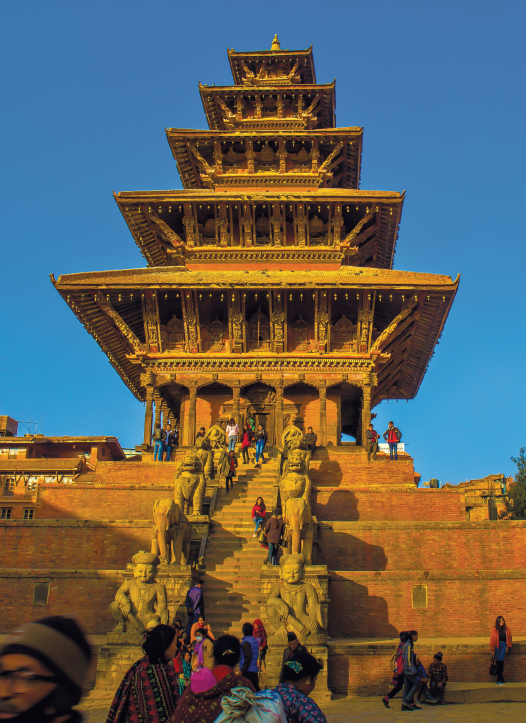 At a time when family mem bers are dispersed and gath erings go without the in
At a time when family mem bers are dispersed and gath erings go without the in
volvement of the entire family, it gives a great sense of pleasure to see families of three or four generations together celebrating hesameevent.Thesedays,especially in major cities, Gurungs come together to celebrate Tamu Losar (Gurung New Year) at a common place and rejoice in various cultural processions, feasting and merry-making. In the old days in the villages, they gathered in courtyards to celebrate Losar. If you happened to be in Kathmandu around 28 to 30 December, however, you may have noticed the Tundikhel grounds at the city center vibrant with colorful stalls and people thronging inside. Tamu Losar is celebrated on every 15 Poush of the Nepali calendar (approx. 30 December).
Gurungs, who call themselves ‘Tamu’, are indigenous inhabitants of west-central parts of Nepal. Some also live east of Kathmandu. There are numerous clans of Gurung, the members of which are all well known for their valor, humor, singing and dancing skills. Their warm welcome and hospitality at the Losar celebration were evident from the plates with sel roti (rice flour donuts) and achaar (spicey pickles) being distributed around. The Tamu Losar marks the beginning of the Tamu Sambat or Gurung Calendar Year.
Gurungs divide time into cycles of 12 years (lohokor), to each year of which a special name is given, which is known as barga (lho). Losar also heralds the change in ‘Lho’. According to the oriental astrological system, there are 12 lhos–garuda, serpent, horse, sheep, monkey, bird, dog, deer, mouse, cow, tiger and cat. Therefore, each year is marked by a particular animal and they are arranged in a single circle (on paper), closely following the Tibetan calendar with its’ 12 animals. In early days, when there was no calendar system in Nepal, the 12 rotation system was used to calculate peoples’ ages.
Losar is a big celebration for Gurungs. Ganjasingh Gurung, Director of the Tamu Samaj (Gurung Society), joined a troupe of Tanahu District dancers during the celebration. He highlighted the significance of choosing this day for marking the New Year celebration. Poush 15 marks the end of winter and start of spring and it is traditionally celebrated for three days including a banbhoj (picnic). In the first two days, various sporting events took place including competition for prizes handed out on the third day. There were numerous stalls of food and drink, and happy dohori singing and dancing on a special stage. A group of men competed in a tug-of-war rope pulling contest, young and old, all in it for the fun.
Gurung men wear bhangra, a white cloth shirt-like apparel tied across the chest and open like a bag at the back (for carrying things), and a kachhad, like a short sarong or kilt. Gurung women, both children and adolescents, were seen in their maroon velvet ghalek (blouses), enhanced by large gold earrings and semi-precious stone necklaces. An enthusiastic Yogesh Gurung informed us that the stalls selling varieties of delicacies were set up by people from different areas, families or individuals set up. Good food, good company and music is the essence of good times. People in small and large groups sat on the ground enjoying mouthwatering dishes. Others joined in the traditional dancing. There was also home-made raksi (alcohol). The three-day public Losar celebrations continued till the stars were out; then at home they invited visitors for gatherings for almost a week.











